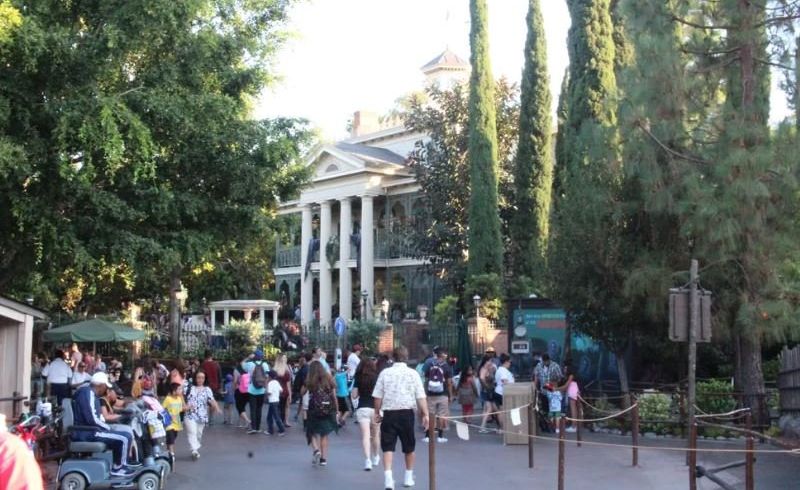'Go Away Green' and 'Bye Bye Blue.' The secret paint Disney uses to hide objects in plain sight.
Disney is the master of camulflage.
The doorway to Disney's exclusive private restaurant, Club 33, is painted in "Go Away Green" so as to be inconspicuous.
The masterminds at Disney are known for creating eye-catching spectacles you can't turn away from, but did you know they're also adept at concealing things they don't want you to see? According to a number of online reports, Disney uses a few clever shades of paint to disguise things like trash cans, fences and administrative buildings that don't otherwise fit into the mise en scene. The hues are informally called "Go Away Green" (or "No See Um Green"), "Bye Bye Blue" (or "Blending Blue") and "No See Um Grey."
Disney won’t give away their formula, but crafty parkgoers claim to have matched the shades to some easy-to-procure paint store varieties, should you also want to use this visual trickery.
"The goal of this [Go Away Green] shade is to cause the object to fade into your color spectrum so that your eye will miss it completely," Gavin Doyle, Disney expert who writes the website Disney Dose (and hosts podcast of the same name) told Business Insider.
"The best example can be found on the outdoor lift hill of Big Thunder Mountain, where you can easily see backstage by turning your head to the right," says Doyle. "Most guests simply don’t see this backstage area as everything is covered in Disney’s special green-colored paint.”
If you are thinking, “Wait, what? I’ve never seen that!” you are not alone! Dang sneaky paint!
Another example, says Doyle, is the exterior door to the secret private restaurant, Club 33, cloaked in Go Away Green.
Not to mention trash bins, fences, light posts, and entrances to the “utilidors” (Disney’s vast network of underground tunnels, which are technically ground level and used for everything behind-the-scenes) and basically anything that might detract from the magic.

Disneyland's Haunted Mansion stands out while fences, trash bins, umbrellas and more are disguised.
Theme Park Tourist/ WIKIMEDIA COMMONS
In addition to Go Away Green, Disney uses a shade of blue to camouflage things above the tree line so the object they’re trying to conceal will blend into the skyline. They also use a drab grey color for concealing things in areas of the park where there is more concrete and less foliage (like Tomorrowland).
This kind of trompe l'oeil can be used outside the park boundaries. While Disney implements a level of design between obsessive detail and mind control, using color to make certain things come to the foreground and others recede isn’t pure witchcraft.
It’s what people do with eyeshadow and highlights, with stripes and dark, slimming colors. Why not conceal your unsightly fence or utility box? According to an article on Simplemost, the recommendation is to “look at the prevalent hues close by to find the best camouflaging color for your home.”

Main Street at Walt Disney World conceals benches, fences and lamp posts with a drab green color.
Jedi94/ WIKIMEDIA COMMONS
“So if I were to paint the family in this camouflage, perhaps we could sneak into Disney World without paying, and they’d never see us,” quipped u/Simba7 on a Today I Learned Reddit thread about Disney’s use of color.
“Finally, the perfect color to dress when I’m forced to go to parties,” joked u/SuperStrawbear.
“This is the color of the front door of my house and people always leave fliers around the back lol,” shared u/iwishiwereagiraffe.
It's definitely something to keep in mind when incorporating these colors at home!
